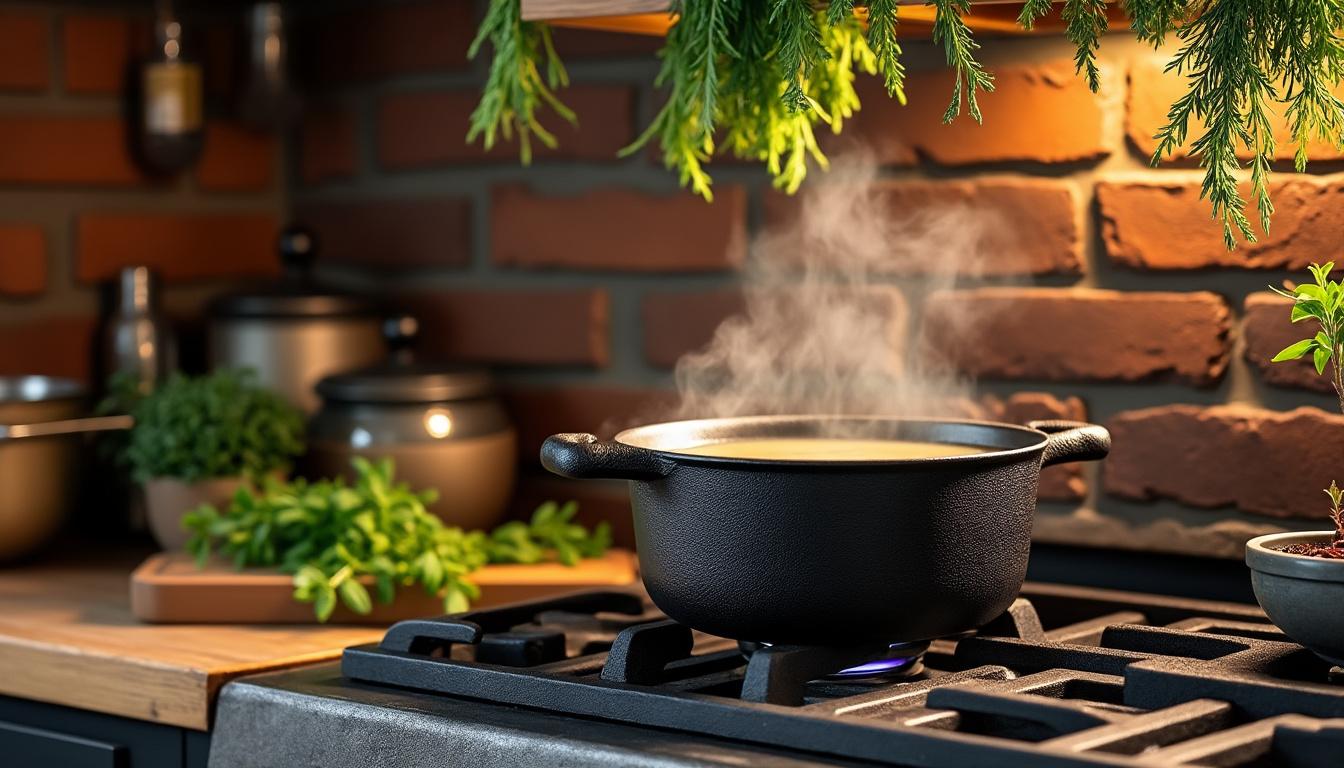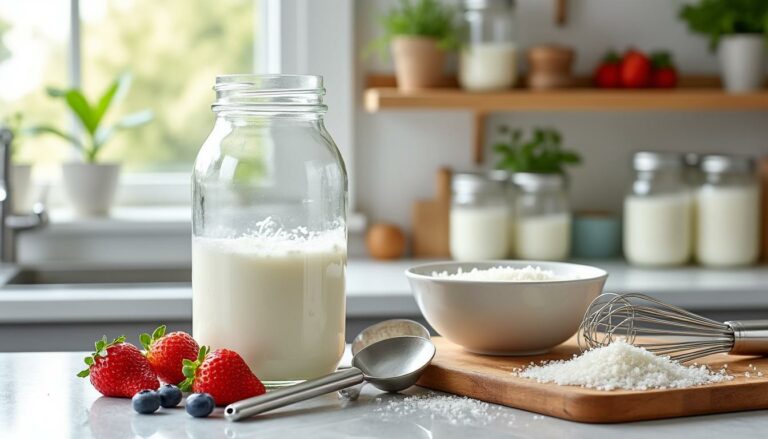What is bone broth? Its numerous health benefits discussed
Bone broth has simmered in clay pots for thousands of years, yet 2025’s wellness scene treats this humble stock like a brand-new super-drink. TikTokers flaunt radiant skin, endurance athletes sip it for joint comfort, and dietitians praise its gentle protein hit. Behind the online hype lies a simple craft: bones, water, patience. The result is an amber liquid loaded with collagen-rich gelatin, electrolytes, and amino acids your body can turn into repair materials. Below, you’ll learn what sets bone broth apart from regular stock, the proven (and still-unproven) health gains, the smartest ways to buy or brew it, and practical tips for folding a mug of this “liquid gold” into everyday life—without falling for marketing traps. By the final section, you’ll have a self-reliant action plan and a clear answer to the question “What is bone broth? Its numerous health benefits discussed.”
What exactly is bone broth and how is it made?
Bones—usually beef, chicken, turkey, fish, or wild game—simmer in water for 8–24 hours with a splash of vinegar to pull out minerals. Unlike quick meat broths, this long bath melts collagen into gelatin, giving the finished liquid a wobbly texture once chilled. Aromatics such as onion skins, carrot tops, celery leaves, and dried medicinal roots add flavor without wasting produce.
- 🦴 Core ingredients: marrow bones, knuckles, joints, filtered water, 1–2 tbsp apple-cider vinegar, and veggie scraps.
- ⏲️ Key differences from stock: higher bone-to-water ratio, longer cook time, and lower heat.
- 🌿 Traditional additions: seaweed for iodine, dried shiitake for umami, or astragalus root for immune support.

Why the gelatinous texture matters
Gelatin forms when collagen unwinds in hot water. This jelly carries glycine, proline, and glutamine—three amino acids tied to gut lining support and connective tissue repair. If your cooled broth doesn’t gel, don’t worry; nutrient density still depends on bone quality and simmer time.
| 🕰️ Simmer Time | Texture When Cooled | Ideal Use |
|---|---|---|
| 4–6 h | Thin, fluid 😊 | Quick soups, rice cooking water |
| 8–12 h | Light jiggle 😌 | Daily sipping, sauces |
| 16–24 h | Firm gel 💪 | Concentrated gut tonic, glazes |
Science-backed health benefits of bone broth
Modern labs confirm several folk claims, yet some benefits remain anecdotal. Let’s separate solid evidence from wishful thinking.
Protein and amino acid profile
- 🥣 Average cup delivers 9–10 g protein, handy for light snacks or fasting days.
- 🔬 Collagen peptides break into amino acids your body uses for muscle repair, but bone broth is not a complete protein (low in tryptophan).
- 🍖 Beef bones yield the highest collagen; fish heads supply extra iodine, helpful for thyroid balance.
Joint and bone comfort
Glycosaminoglycans in marrow—think glucosamine and chondroitin—lubricate cartilage. Small human trials in 2024 reported modest pain reduction in adults with mild knee discomfort after eight weeks of daily bone broth versus placebo.
Gut-lining support
Fermented foods and bone broth make a powerful duo. Gelatin’s glutamine feeds enterocytes (gut wall cells), while warm salt water stimulates stomach acid for smoother digestion.
- 🧘♂️ Many homesteaders sip a mug before meals to reduce bloating.
- 💧 Hydration bonus: one cup supplies ~250 mg potassium, balancing electrolytes during intermittent fasting.
| Benefit 🩺 | Bone Broth Component | Level of Evidence (2025) |
|---|---|---|
| Skin elasticity | Collagen peptides ✨ | Moderate—7 RCTs |
| Joint comfort | Glucosamine, chondroitin 🦵 | Emerging—small trials |
| Gut barrier | Gelatin, glycine 🛡️ | Promising—animal + pilot human |
| Sleep quality | Glycine 🌙 | Limited—need larger studies |
Potential downsides & choosing the best store-bought broth
Not all cartons are equal. Sodium, sourcing, and hidden allergens vary wildly across brands.
- ⚠️ Sodium check: aim for ≤300 mg per cup if watching blood pressure.
- 🐟 Shellfish traces: read labels carefully—some broths simmer with crustacean shells.
- 🍽️ Nutrient gaps: bone broth can’t replace fiber-rich meals; pair it with veggies or nutrient-dense plants.
| Brand 🏷️ | Protein/Cup | Sodium/Cup | Notable Feature |
|---|---|---|---|
| Kettle & Fire | 10 g | 260 mg | Grass-fed bones |
| Bone Broth Co. | 9 g | 450 mg | Spicy turmeric option |
| Epic Provisions | 6 g | 340 mg | Pouch packaging ♻️ |
| Bare Bones Broth | 10 g | 180 mg | Low-sodium line 👍 |
| Brodo | 9 g | 310 mg | Chef-crafted flavor |
| Osso Good | 13 g | 150 mg | Gel guarantee |
| Pacific Foods | 7 g | 550 mg | Widely available |
| Kitchen Accomplice | 8 g | 420 mg | Squeeze concentrate |
| Vital Proteins | 9 g | 200 mg | Added collagen peptides |
| Good Nature | 6 g | 230 mg | Free-range chicken |
Smart shopping checklist
- 🕵️♀️ Scan ingredients—no “natural flavors” should rank above bones or veggies.
- 🌱 Look for organic or pasture-raised certification to reduce heavy-metal risk.
- 🚫 If sensitive to histamines, prefer freshly made broth and freeze portions within 24 h.
Step-by-step guide to making bone broth at home
A homemade pot costs pennies per cup and lets you control every variable.
- 🔥 Roast bones at 400 °F (200 °C) for 30 min to deepen flavor.
- 🫗 Deglaze with water and vinegar; transfer to stockpot.
- 🌡️ Simmer gently—barely a bubble—for 12 h (poultry) or 18 h (beef).
- 🥕 Add veg scraps during last 4 h to prevent bitterness.
- 🧊 Strain, cool fast, then portion into ice-cube trays or mason jars.
Optionally, pressure-cook for three hours to save fuel—handy for off-grid setups.
Flavor variations to try
- 🌶️ Mexican style: add dried chiles, cumin, and coriander.
- 🍄 Umami boost: include dried porcini and a strip of kombu seaweed.
- 🌿 Herbal tonic: finish with parsley, thyme, and a splash of nettle tea—drawing inspiration from our top healing herbs list.
Creative ways to use bone broth every day
If sipping a hot mug feels dull, blend broth into meals you already love.
- 🍚 Replace water when cooking quinoa or brown rice for deeper flavor.
- 🥔 Mash sweet potatoes with warm broth instead of milk—dairy-free creaminess.
- 🍜 Morning miso cup: whisk a teaspoon of miso paste into 6 oz warm broth for probiotic-rich comfort.
- 🍫 Bone-broth hot chocolate (yes, TikTok’s favorite): combine ½ cup broth, ½ cup almond milk, raw cacao, and cinnamon.
| Meal Idea 🍽️ | Broth Amount | Nutrient Bonus |
|---|---|---|
| Stove-top oatmeal | ¼ cup | Extra protein 💪 |
| Smoothie cube | 1 frozen cube | Electrolytes ⚡ |
| Gravy base | 1 cup | Collagen thickness ✨ |
| Quick ramen | 2 cups | Amino acids 🍜 |
Rotate broth types—beef one week, fish the next—to diversify micronutrients and keep your taste buds interested.
FAQ: quick answers to common bone broth questions
Below are the queries most readers—and search engines—tend to raise.
- Does bone broth break a fast?
Yes, it introduces calories and protein, but many intermittent fasters allow up to 50 kcal of broth to maintain electrolytes without triggering strong insulin spikes. - Can vegetarians get similar benefits?
A mineral-rich vegetable stock with seaweed and shiitake offers trace minerals, but it lacks collagen. Some choose algae-based collagen boosters instead. - Is lead or heavy metal contamination a concern?
Studies show levels remain below safety thresholds when using pasture-raised bones. Skimming fat and choosing organic sources further reduces risk. - How long does homemade broth last?
Five days refrigerated, six months frozen. Pressure-canning extends shelf life to one year—ideal for off-grid pantries. - Morning or night—what’s best?
Timing matters less than consistency. Morning cups aid hydration; evening cups supply glycine that may promote restful sleep.
Use these insights to craft or choose a broth that fits your lifestyle. When someone asks, “What is bone broth? Its numerous health benefits discussed,” you now have the practical, evidence-based answer—plus a steaming mug ready to share. 🍵






